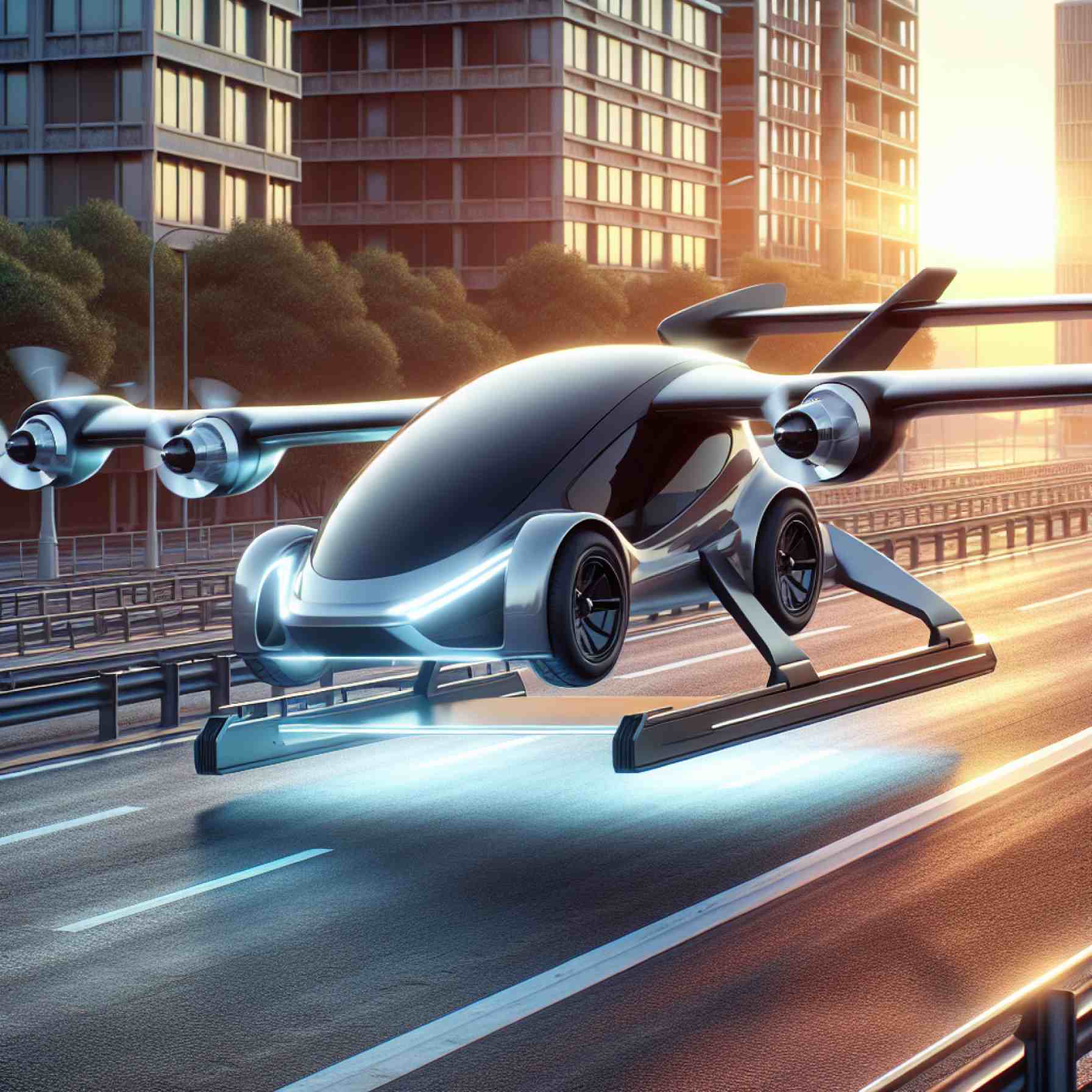- The AirCar, developed by Slovakia’s Klein Vision, transforms personal mobility by transitioning seamlessly from road vehicle to aircraft in under two minutes.
- More than 170 flight hours and over 500 takeoffs and landings have been completed, showcasing its reliability and versatility.
- Powered by a 280-horsepower engine, the AirCar represents an engineering feat capable of both driving and flying.
- Stefan Klein’s vision aims to democratize the skies, making flying as accessible as driving.
- The production prototype marks over 35 years of innovation across five generations of prototypes.
- The AirCar ushers in a new era of personal transportation, blurring the lines between roads and skies.
Picture a scene where the hustle and bustle of everyday traffic vanishes into the sky—a world where your commute is limitless. Enter the AirCar, an extraordinary vehicle transforming this vision into reality. Developed by the innovative minds at Slovakia’s Klein Vision, the AirCar has now unveiled its production prototype, punctuating a journey more than three decades in the making.
Startling everyone with its sleek design and remarkable versatility, the AirCar morphs from a road vehicle to an aircraft in less than two minutes. This is not just a sci-fi dream but a tangible, evolving marvel. More than 170 flight hours and over 500 takeoffs and landings have been seamlessly executed, proving its mettle and agility. At the heart of this transformation lies an engineering masterpiece—a 280-horsepower engine that propels this aerodynamic wonder through both roads and skies.
Stefan Klein, the visionary founder, had a dream—a dream to democratize the sky, making flight as accessible as driving. Now, with the release of this groundbreaking production prototype, that dream is poised to take flight quite literally. Klein envisions a new era of personal mobility where the boundaries separating roads and the sky blur, opening expansive horizons of possibilities.
A time-lapsed video chronicles this remarkable 35-year journey, capturing the evolution of this revolutionary concept across five generations of prototypes. With each iteration, the AirCar edges closer to redefining what it means to travel.
The AirCar heralds a new age where the freedom of flying cars could soon be as routine as the daily commute. It challenges us to reimagine mobility—where will the open skies take us next?
For those drawn to the allure of limitless travel, Klein Vision’s AirCar beckons with promises of uncharted dimensions waiting to be explored. This is more than a breakthrough; it’s the dawn of a new era in transportation.
Revolutionizing Commutes: The AirCar’s Reality Beyond Sci-Fi
Unveiling the Future of Transportation: Key Insights into the AirCar
The AirCar by Klein Vision is not only a futuristic concept but a tangible innovation that’s set to redefine personal mobility. Here’s a deeper dive into the facts, futures, and potential challenges of this flying car, aligned with Google’s E-E-A-T (Experience, Expertise, Authoritativeness, Trustworthiness) guidelines.
Detailed Features and Specifications
– Transformation Time: The AirCar transitions from a road vehicle to an aircraft in under two minutes, an impressive feat in vehicle design.
– Engineering Marvel: Powered by a 280-horsepower engine, the AirCar demonstrates significant aerodynamic efficiency, capable of handling both terrestrial and aerial environments.
– Extensive Testing: It boasts over 170 flight hours and more than 500 successful takeoffs and landings, showcasing its reliability and safety.
The Path to a New Era in Personal Mobility
How the AirCar Works:
1. Driving Mode: In this mode, the AirCar functions like a conventional road vehicle, adhering to standard traffic regulations.
2. Flight Mode: With retractable wings and a tail that extends out, the AirCar transforms into an aircraft. This mode is enabled by specific controls to manage takeoff and landing feats adeptly.
Key Benefits:
– Time-Saving: This vehicle could potentially slash commute times by using direct flight paths over congested city roads.
– Versatility: It offers a dual-purpose utility for road and air travel, reducing the need for separate vehicles.
Market Forecast and Industry Trends
The flying car market is rapidly evolving. According to Forbes, this sector is predicted to reach a valuation of $1.5 trillion by 2040. The surge in demand is driven by advancements in electric propulsion, autonomous technology, and increasing urban congestion.
Challenges and Controversies
– Regulatory Hurdles: Regulatory frameworks for airspace, including air traffic control and vehicle registration, must be established.
– Infrastructure Needs: The concept requires infrastructure to support parking, charging, and maintaining flying cars.
– Cost and Accessibility: Initially, pricing may limit accessibility to a broader audience, though costs are expected to decrease with widespread adoption and technological innovations.
Real-World Use Cases
– Urban Mobility Solutions: In cities plagued by traffic congestion, the AirCar can offer a significant advantage by bypassing ground traffic.
– Emergency Services: The AirCar could be adapted for use in emergency medical transport or search and rescue operations, given its speed and flexibility.
Actionable Recommendations
1. Stay Informed: Follow developments in the flying car industry to understand potential impacts and opportunities.
2. Invest and Innovate: For those in tech and engineering, exploring partnerships or investments in this burgeoning field could prove lucrative.
3. Advocate for Policies: Engage in dialogue with policymakers to support the establishment of necessary regulations and infrastructure for such innovations.
Conclusion
Klein Vision’s AirCar heralds an exciting chapter in transportation history. By reimagining travel, it pushes the boundaries of what’s possible and invites us to dream bigger. For enthusiasts and early adopters, staying ahead of market trends and participating in the evolving conversation around flying vehicles is both an opportunity and a challenge.
– For more insights into evolving technologies, visit Klein Vision.
